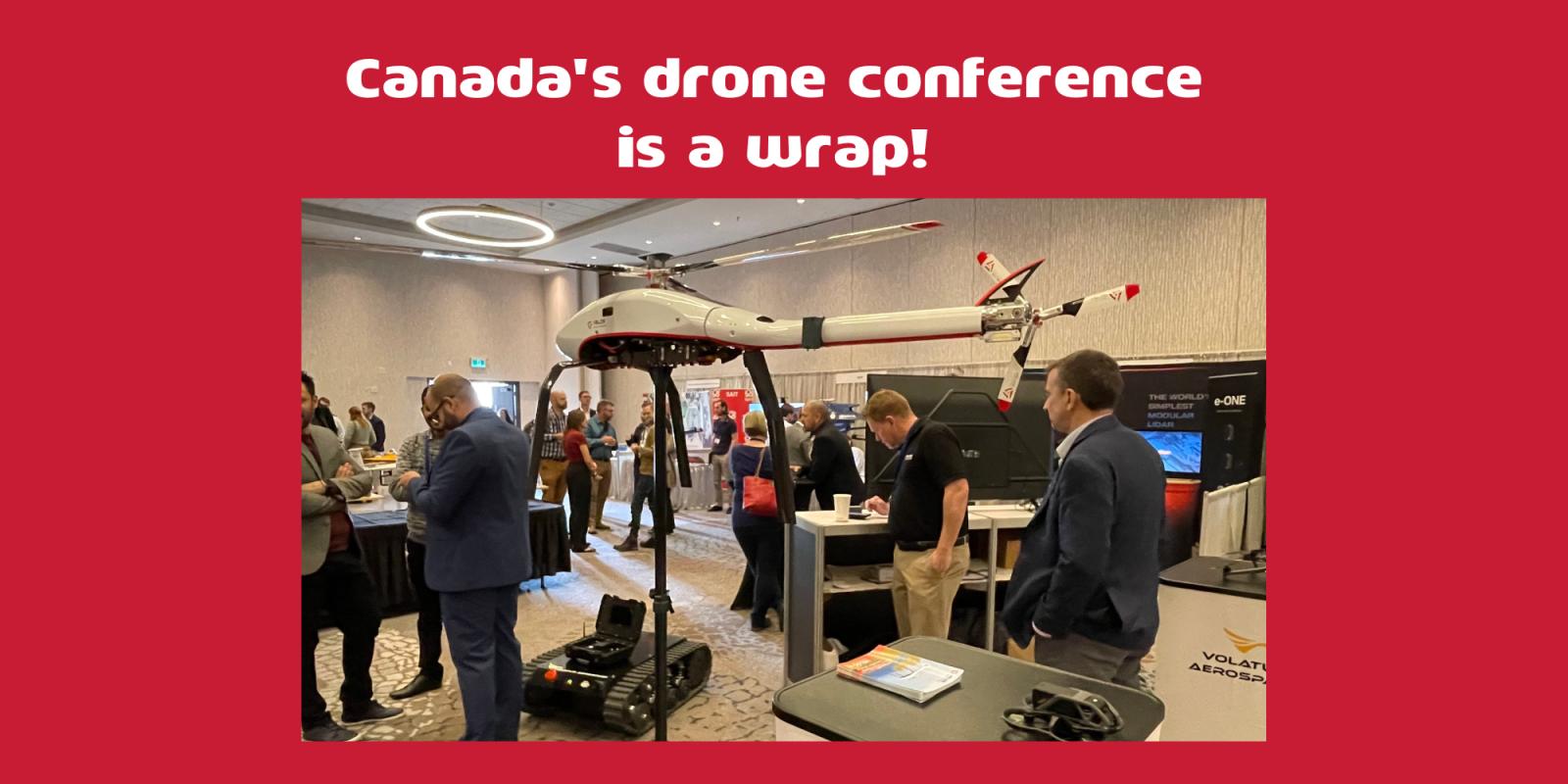
After a too-long hiatus due to the COVID-19 pandemic, the Aerial Evolution Association of Canada has held its first in-person conference since 2019. It’s Canada’s biggest conference in the drone industry. And, by all accounts, it was a great success.
The Aerial Evolution Association of Canada represents the interests of the Canadian drone industry (though drones are often referred to in Canada as remotely piloted aircraft systems). The conference brings together service providers, innovators, and regulators from the world of both crewed and uncrewed aircraft systems. You might think of it as the Canadian version of AUVSI, though there are some differences.
But a similarity? The show is known for its outstanding learning tracks – and this year was no exception.
Day One
There was a kickoff keynote from Volatus Aerospace, a publicly listed company that is the largest player in the drone world in Canada. CEO Glen Lynch got things underway by listing what he described as some very big numbers: 52, 37, 10, and zero.
We weren’t sure what he was referring to, but the next slide in his presentation made that clear:
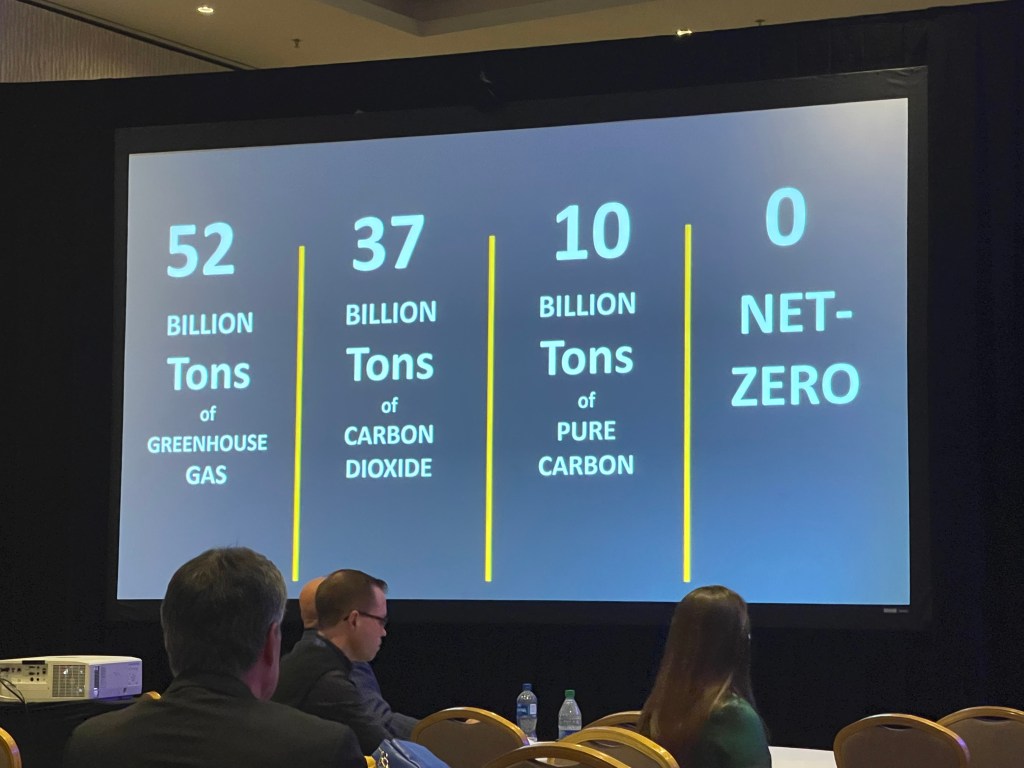
What’s the connection?
It might not be immediately obvious, but drones will play a growing role over time when it comes to curbing carbon emissions. As we move toward a world where drones are in operation at scale, there’s potential for significant reductions in the emission of greenhouse gases. Even when using fuel-based drones, said Lynch, “the consumption is minimal when compared with traditional crewed aviation.”
It’s also, said Lynch, a business opportunity and a chance to implement Environmental Social Governance as part of a company’s business practice.
“We can introduce green technologies to supplement or replace traditional crewed aircraft,” he said. By introducing drone technologies, we actually add something of real value to our customers.”

BVLOS: “The holy grail”
If you work in this industry, you’ll know that many service providers have been waiting (and waiting) for regulators to make Beyond Visual Line of Sight Flights more accessible. This would open the door to drones carrying out inspections of long-range assets (like oil and gas pipelines, railroads, and other infrastructure) without having to jump through sometimes-cumbersome regulatory hoops.
“Yes, BVLOS is the holy grail. You cannot scale this business without BVLOS. You cannot get to that sustainable revenue and that recurring revenue without it,” said Steve Magirias, CEO of Drone Delivery Canada.
“BVLOS is a miracle that’s going to happen,” said Ken Reed, a vertiport planner from Colorado’s Skyway. “I don’t know how it’s going to happen, and I don’t care. But it’s going to happen.”
Service providers were pleased to hear an update from regulator Transport Canada. The federal agency says it has been working on a set of guidelines that will permit low-risk BVLOS flights (think rural, remote), in the near future. This slide is from the regulator’s presentation and outlines Transport Canada’s plans to safely and incrementally integrate drones into the airspace for BVLOS flights:
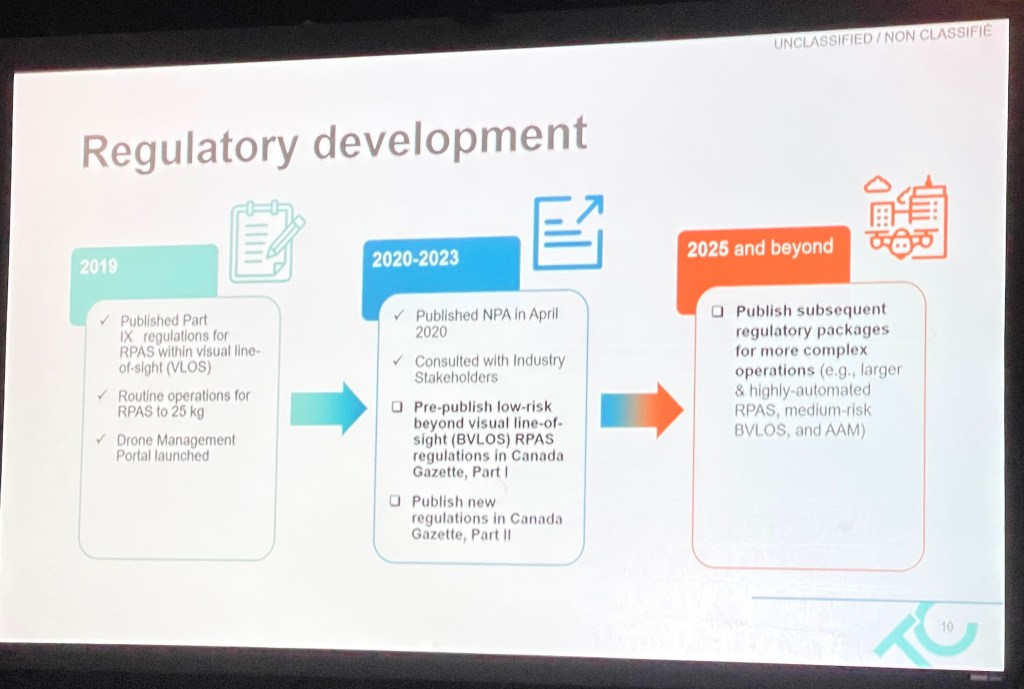
First Nations and drones
There was also a terrific panel that explored the evolution of the drone space from an Indigenous perspective. Many First Nations entrepreneurs are in this sector. The promise of eventual routine drone delivery offers many opportunities for remote communities.
But there are also issues to address. For example, if there are flights over Indigenous or contested lands, who owns the data? The concept of data sovereignty is a big one.
“What about data captured on First Nations territory,” asked Jacob Taylor of Indigenous Aerospace. “What are you trying to do and can you get permission from the community to do that – and can you provide us with a way to use that information for ourselves?”
Good questions, and a thought-provoking session.

Gear
Of course, every good conference features a trade show/exhibit. And while this wasn’t on the scale of the AUVSI conference, there was a healthy showing from the industry. Plus, there was a drone we’re guessing you’ve never seen before. Pictured below is the Aerium Analytics RoBird – which is used to mitigate birds and other wildlife at the Edmonton International Airport. Yes, it looks like a bird and flies like a bird. Here’s Aerium CEO Jordan Cicoria giving a brief demo:
Wait, there’s more!
And there is. Here’s a gallery of just some of the cool gear that was on display.
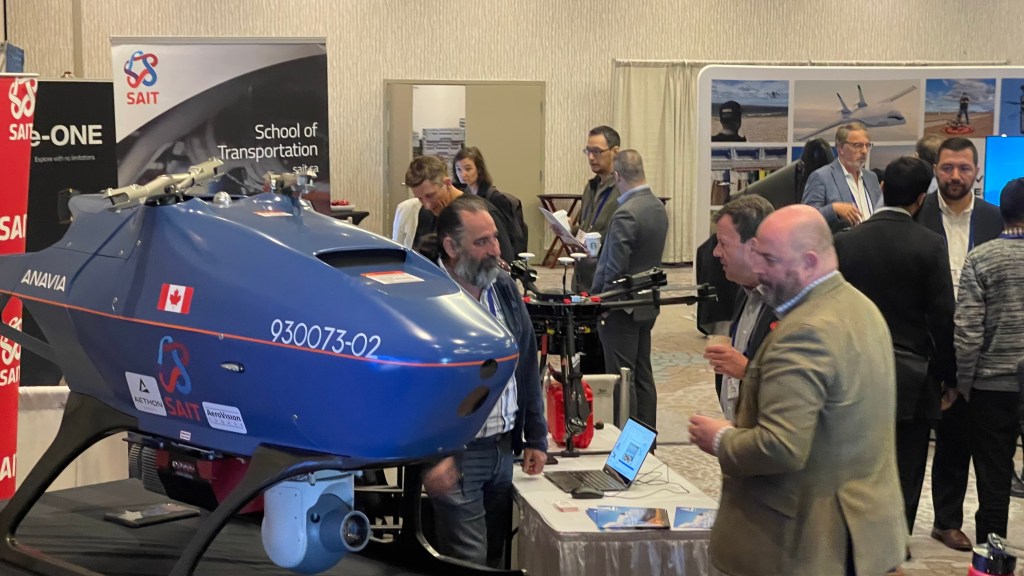
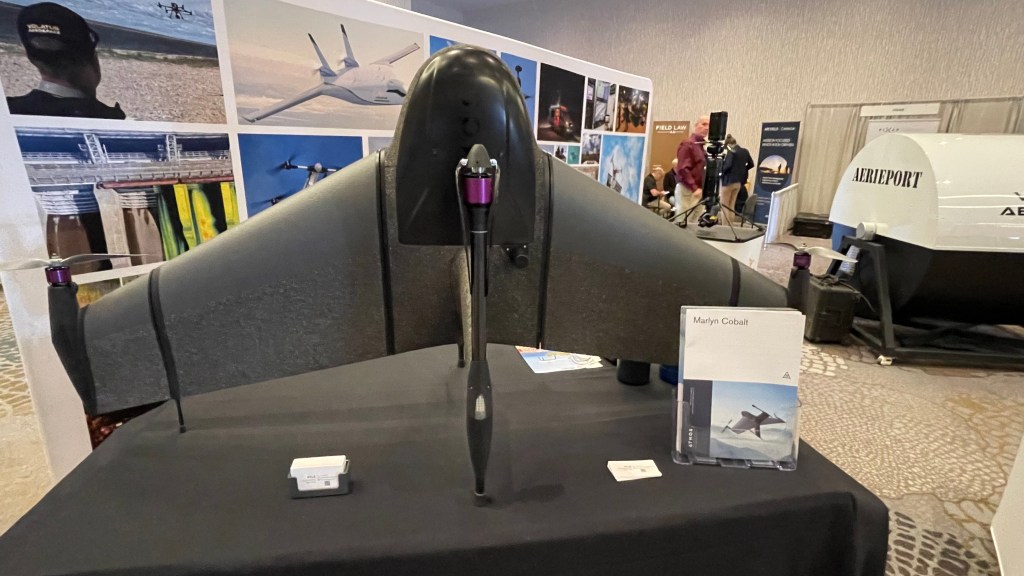
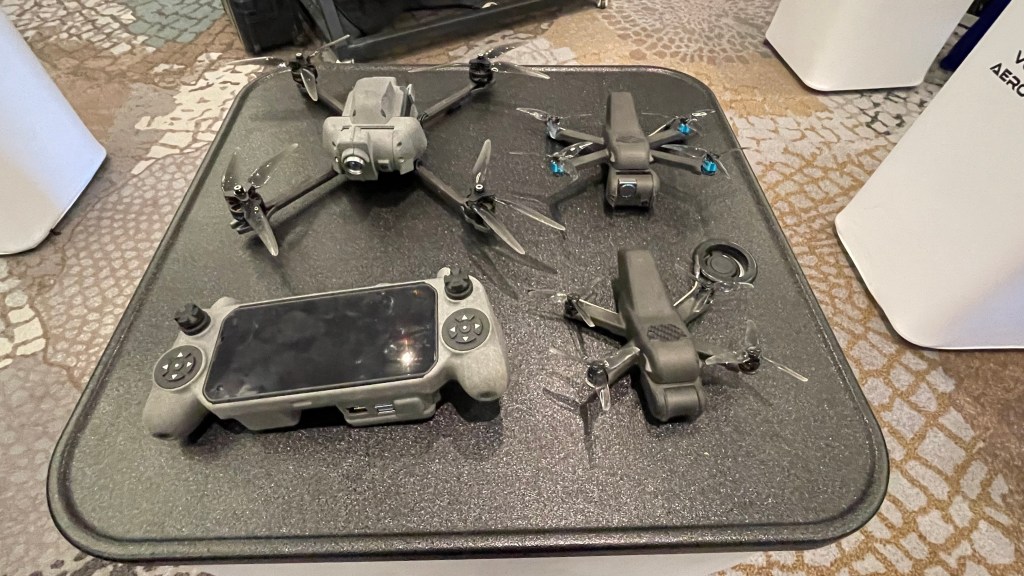
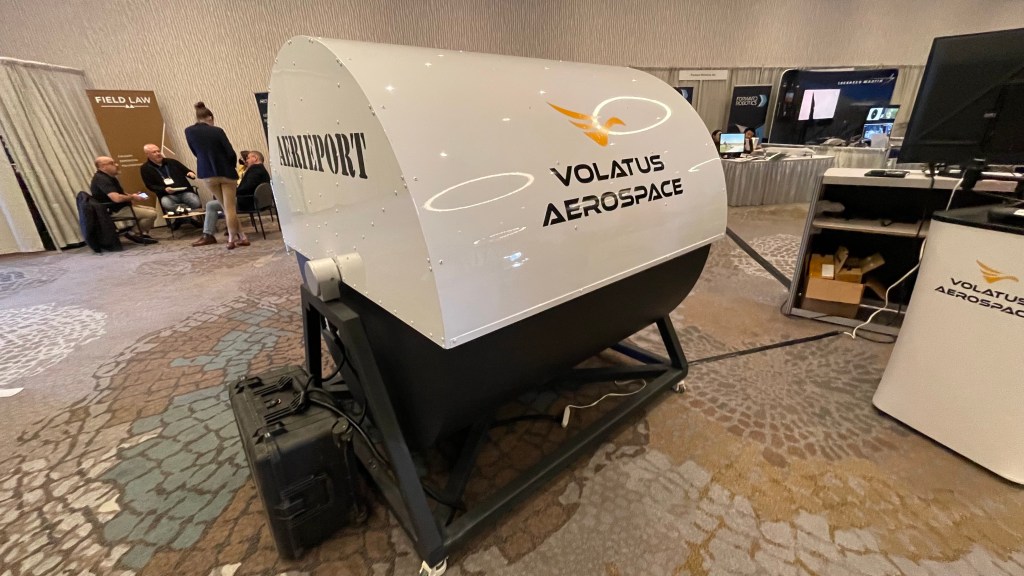
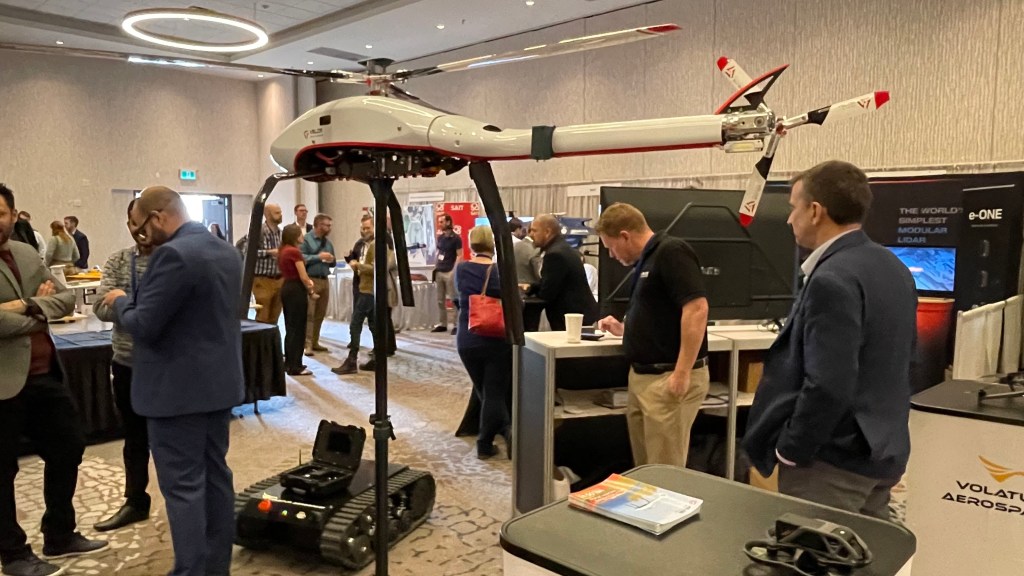
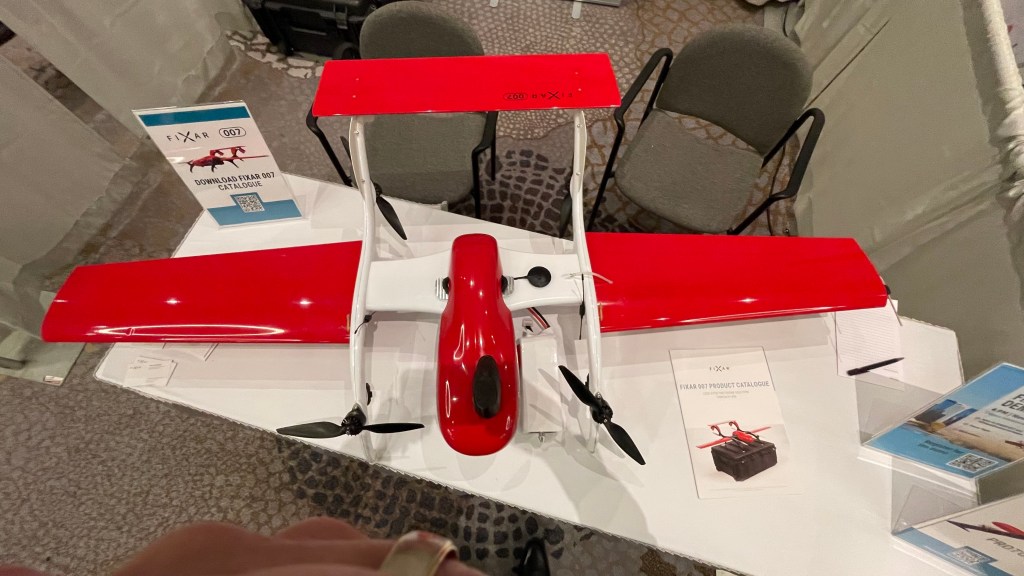

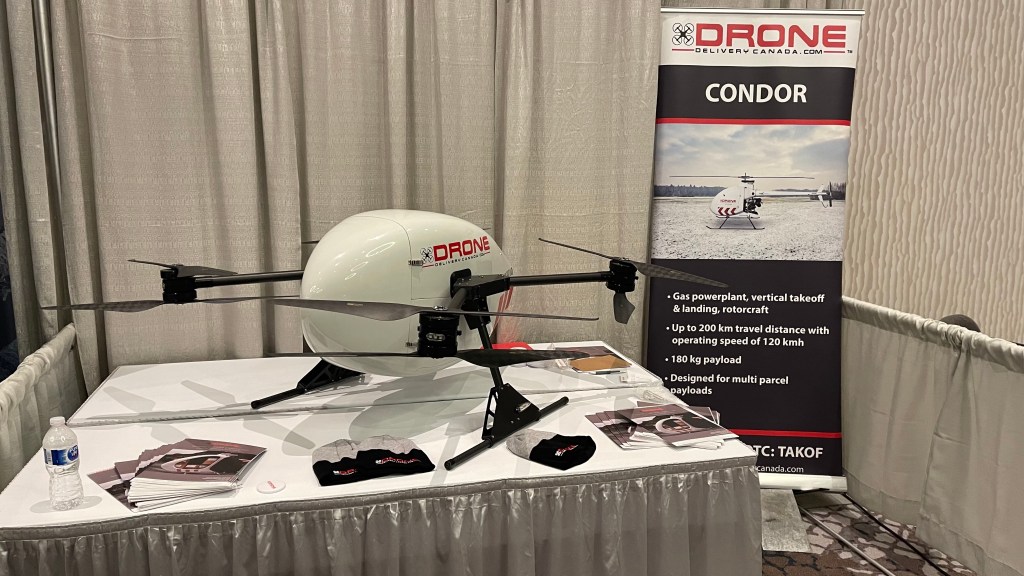
And that’s a wrap
For the Canadian drone sector (along with several interested parties from abroad), this was a highly successful event. After having to shut down in-person conferences for a couple of years due to the ongoing pandemic, the industry was just itching to get back on track. Learning sessions are always a big part of the Aerial Evolution Association of Canada’s annual events, and #AE22 did not disappoint.
The next two conferences will take place in Ottawa in November of 2023 and 2024. If you’re interested in more info about the association, you’ll find it here.
FTC: We use income earning auto affiliate links. More.


Comments